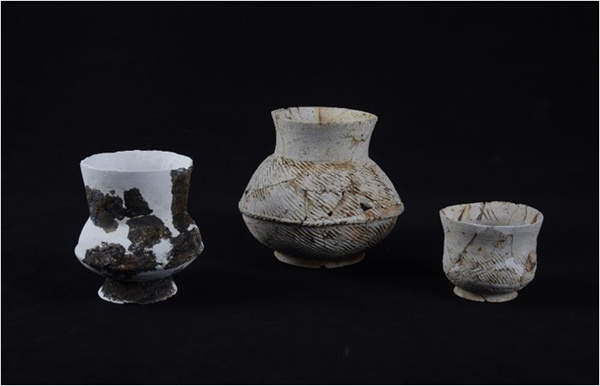

Nearly 1,000 cultural relics including jade items, bronze and pottery, and stone artifacts were unearthed from the graveyard, estimated to be more than 4,000 square meters in size. About 30 holes used to erect columns in construction were also found in the settlement area.
The places where people lived and got buried were not strictly separated, as Liu explains.
For some people there was evidence of more than one funeral ceremony, while other tombs were found to have had been moved altogether. The findings can largely expand the understanding of scholars about funeral customs in the area during the Neolithic period. Other key discoveries include grains of rice, which Liu says are precious material for studying the spread of rice cultivation in Chinese agriculture.
Specific dating of the Yanshanzhai site has not been released, but current findings lead archaeologists to believe it belongs to Shixia Culture, dating back roughly around 4,000 to 5,000 years.
While the culture, centering around present-day northern Guangdong, was first identified in the 1970s, until this recent discovery, no high-level Neolithic sites had been found in the area.
According to Li Xinwei, a researcher with the Institute of Archaeology at the Chinese Academy of Social Sciences, the influence of the culture once reached today's Pearl River Delta region and Hong Kong.
"The Lingnan region has its unique process of cultural development," Li says. "Thanks to the new findings of Yanshanzhai, we can better understand its lineage."
Liu adds that the complexity of the Yanshanzhai site has been hitherto unseen at other contemporaneous sites.